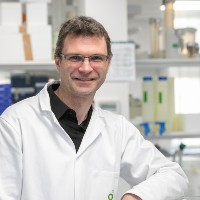Our Research
Our research addresses the molecular basis of the interactions between disease-causing bacteria and their mammalian hosts. In particular, we study the intracellular biology of the obligate intracellular bacterium Chlamydia trachomatis. C.trachomatis is the leading bacterial agent of sexually transmitted disease worldwide and in developing nations causes blindness (trachoma), a neglected tropical disease.
Chlamydia forces its own entry into eukaryotic cells and forges a replicative niche within a specialised membrane-bound compartment (an ‘inclusion’), reprogrammed by the bacteria to mimic a host organelle. The inclusion remains segregated from the cellular endocytic pathway but is able to selectively engage with the secretory pathway.
Like some other Gram-negative bacteria including Salmonella and enteropathogenic E.coli, Chlamydia encodes a type III secretion system (T3SS), a sophisticated macromolecular assembly that spans the bacterial envelope and translocates virulence ‘effector’ proteins into mammalian cells. Remarkably, these effectors are often structurally distinct yet exquisitely mimic eukaryotic functions. Deciphering their subversive activities can provide critical insights into the mechanisms of infectious diseases and reveal potential new targets for therapeutics, diagnostics and vaccines. It also uncovers new assays and reagents to dissect the fundamental biology of cellular processes, including signal transduction, cytoskeletal dynamics, intracellular trafficking and cytokinesis.
Chlamydial effectors promote bacterial entry and replication, and the bacteria might translocate >50 effectors into cells. Some ‘inclusion proteins’ are characterised by a signature bi-lobed hydrophobic motif, whereas others remain anonymous within the genome in which a remarkable ~35% of open reading frames share no significant homology to either prokaryotic or eukaryotic proteins. Despite the importance of these events, comparatively little is know about the structure, function or targets of chlamydial effectors or the molecular mechanisms that underlie inclusion biogenesis. We are applying a combination of biochemical, cell biology and bio-imaging approaches to decipher these processes, in addition to applying recently emerging genetic techniques.
Dr Richard Hayward
Principal Investigator
Group Members


